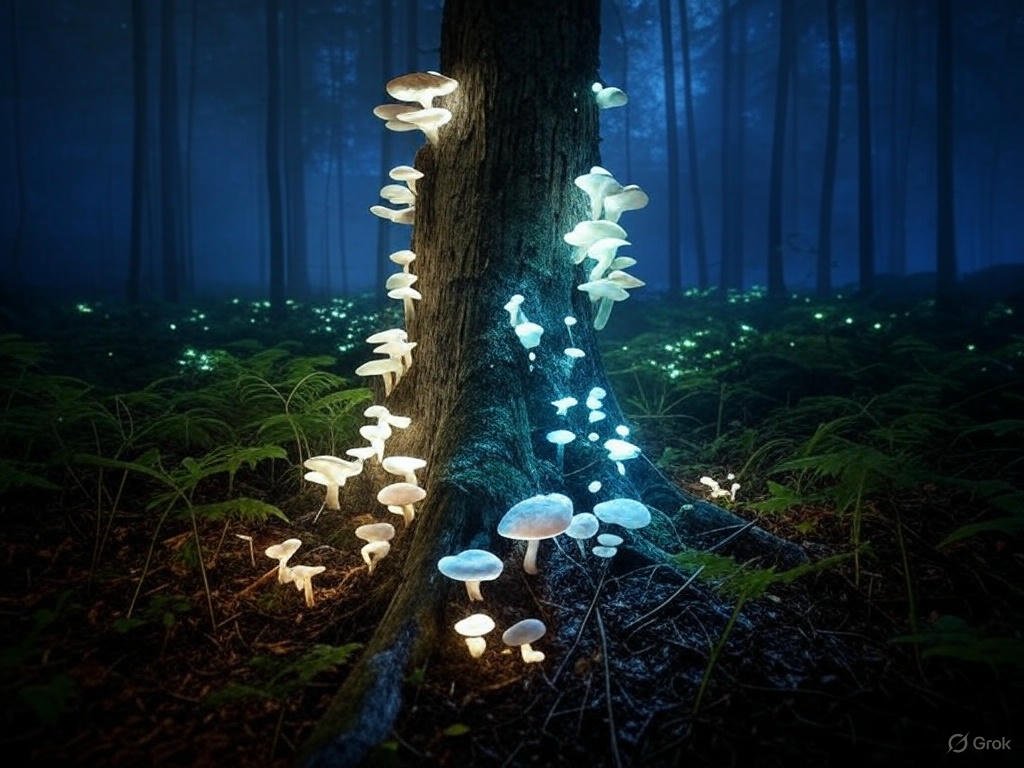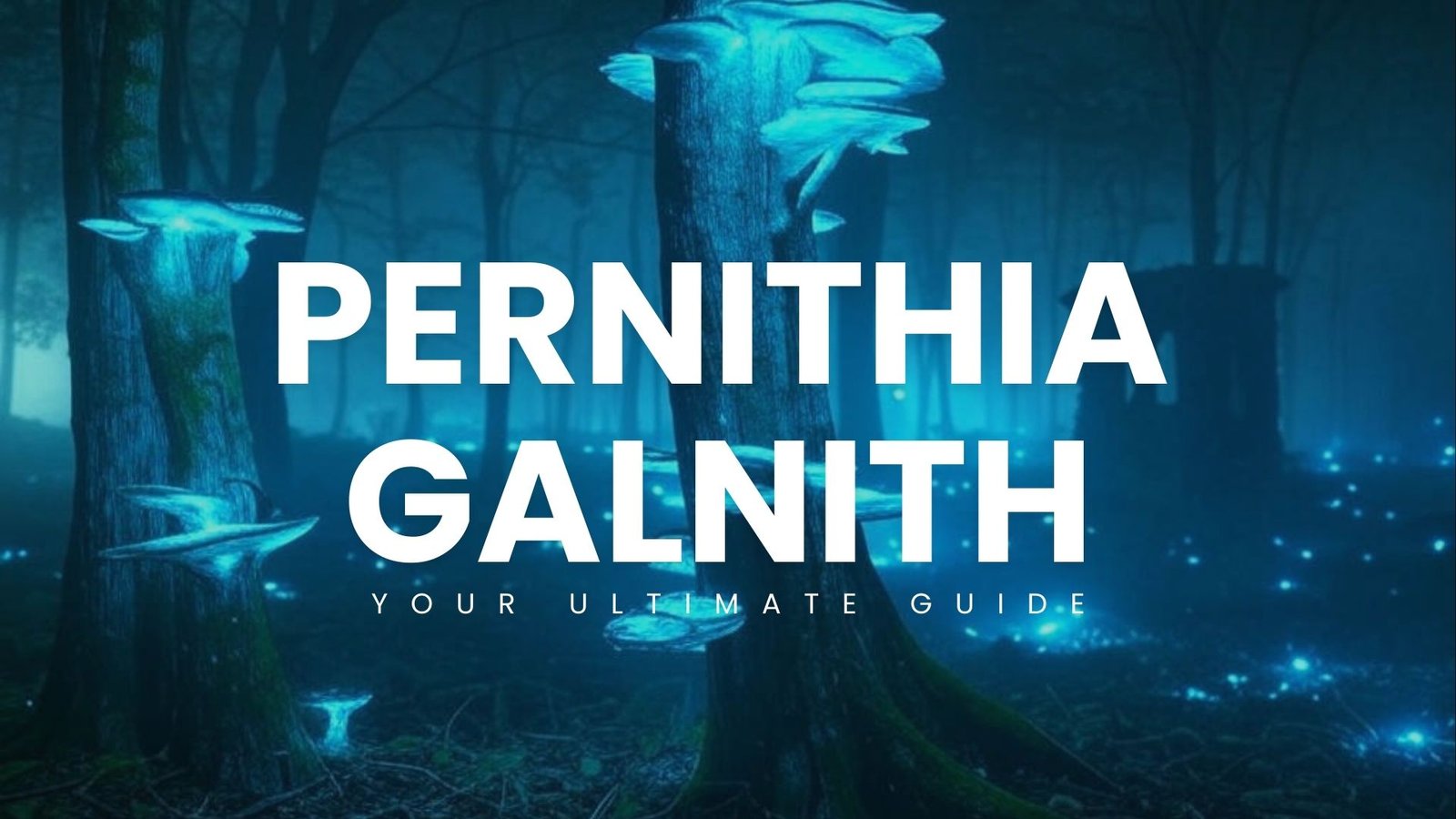The Power of Nature’s Imagination
In the lush, imagined forests of speculative fiction, Pernithia Galnith thrives—a dazzling symbiosis between bioluminescent fungi and ancient Devonian trees. This fictional marvel, glowing softly under starlight, captures the imagination with its elegant balance of beauty and function. Yet, beyond its narrative allure, Pernithia Galnith whispers a provocative question: can a fictional concept inspire real-world solutions to our planet’s pressing environmental challenges? As climate change accelerates, symbiotic relationships in nature—like those between fungi and plants—offer a blueprint for resilience and innovation. Could Pernithia Galnith’s radiant partnership light the way toward a sustainable future?
The Science Behind Pernithia Galnith
In its fictional world, Pernithia Galnith describes a symbiotic dance: bioluminescent fungi entwined with Devonian trees, their glowing filaments exchanging nutrients while illuminating the forest floor. The fungi enhance the trees’ nutrient uptake, while the trees provide sugars to fuel the fungi’s ethereal glow. This concept echoes real-world mycorrhizal networks, where fungi form underground alliances with plant roots. These networks, often called the “Wood Wide Web,” facilitate nutrient exchange, boost plant resilience, and sequester carbon in soils.
Real bioluminescent fungi, like Mycena chlorophos or Armillaria mellea (the honey mushroom), offer a glimpse of Pernithia Galnith’s plausibility. Found in tropical and temperate forests, these fungi emit a soft green glow through a chemical reaction called bioluminescence, driven by luciferin and luciferase enzymes. In ecosystems, mycorrhizal fungi enhance soil fertility by breaking down organic matter and cycling nutrients like phosphorus and nitrogen. For example, studies show that mycorrhizal networks can increase crop yields by up to 20% by improving nutrient access. Pernithia Galnith’s fictional brilliance thus finds a foothold in the science of fungal symbiosis and bioluminescence, suggesting pathways for ecological innovation.
Learn more about What If Pernithia Galnith Were Discovered Today? Imagining Its Impact on Science and Society
Potential Applications in Sustainability
The glowing symbiosis of Pernithia Galnith offers a visionary lens for addressing modern environmental challenges. Here are three potential applications inspired by its concept:
1. Bioluminescent Lighting for Energy-Efficient Urban Design
Imagine city streets lit not by electricity but by bioluminescent fungi integrated into urban landscapes. Researchers at institutions like MIT have explored bio-lighting using luciferase enzymes, aiming to reduce the 20% of global electricity consumed by lighting. Fungal-inspired systems could line parks or pathways, harnessing natural glow to cut energy costs and carbon emissions. While scaling bioluminescence for urban use remains a challenge, Pernithia Galnith’s glowing forests inspire prototypes like bio-lamps powered by microbial reactions.
2. Fungal-Based Soil Restoration for Degraded Lands
Mycorrhizal fungi are nature’s soil engineers, capable of reviving degraded lands. Pernithia Galnith’s nutrient-sharing symbiosis mirrors real-world fungal bioremediation, where fungi break down pollutants like pesticides or heavy metals. Projects in sub-Saharan Africa have used mycorrhizal inoculation to restore arid soils, increasing crop yields by 30% in some cases. By mimicking Pernithia Galnith’s model, we could deploy fungi to rehabilitate mining sites or desertified regions, fostering sustainable agriculture and carbon storage.
3. Nocturnal Pollination Strategies to Boost Crop Yields
Pernithia Galnith’s glow attracts nocturnal pollinators in its fictional ecosystem, a concept with real-world potential. Bioluminescent fungi could guide moths or bats to crops at night, enhancing pollination in regions where daytime pollinators are declining. Research on light-based pollination is nascent, but experiments with artificial lighting have increased fruit set in crops like tomatoes by 10%. A fungal-inspired approach could offer a low-energy alternative, supporting food security in a warming world.
These ideas draw from ongoing research, such as fungal bioremediation studies in journals like Environmental Microbiology and bio-luminescent experiments at institutions like the University of Cambridge. Pernithia Galnith’s fictional framework thus amplifies the promise of fungi as ecological innovators.
Engagement Hook: [Insert visual of glowing Mycena chlorophos fungi in a forest, paired with an infographic showing how mycorrhizal networks connect plant roots underground.]
Challenges and Ethical Considerations
While Pernithia Galnith’s concepts spark excitement, they also raise cautions. Introducing bioluminescent organisms into new ecosystems could disrupt local biodiversity, as seen in cases like invasive species outcompeting native flora. For example, genetically engineered bioluminescent plants, while promising, risk crossbreeding with wild species, creating unforeseen ecological imbalances. Scaling fungal-based solutions also faces hurdles, such as ensuring fungi thrive in diverse climates or avoiding overharvesting wild populations.
Ethically, bio-inspired technologies demand robust frameworks. Who controls access to fungal innovations—corporations or communities? Could bioluminescent urban lighting exacerbate light pollution, harming nocturnal wildlife? These questions require interdisciplinary collaboration among scientists, policymakers, and indigenous knowledge holders to ensure innovations align with ecological and social justice. Pernithia Galnith, as a fictional muse, reminds us to balance ambition with responsibility.
Call to Action: Imagining a Greener Future
Pernithia Galnith invites us to see fungi not just as organisms but as partners in sustainability. Start by exploring bioluminescent fungi in your local ecosystem—look for glowing mushrooms on night hikes or join citizen science projects tracking fungal biodiversity. Share your thoughts in the comments: which eco-innovation inspired by Pernithia Galnith excites you most? For deeper dives, join online forums like r/mycology or read Entangled Life by Merlin Sheldrake, a vivid exploration of fungal wonders. Together, let’s imagine how speculative ideas can shape a greener, more resilient world.
Engagement Hook: [Insert poll: “Which Pernithia Galnith-inspired innovation excites you most? A) Bioluminescent lighting, B) Soil restoration, C) Nocturnal pollination, D) Other (comment below).”]
Conclusion
Pernithia Galnith, though born in fiction, serves as a radiant bridge between imagination and innovation. Its glowing symbiosis illuminates the potential of fungi to address climate change, from energy-efficient lighting to soil restoration and beyond. As we face a warming planet, such concepts remind us that nature’s ingenuity—real and imagined—holds keys to sustainability. Stay tuned for future posts exploring fungi in space exploration and other eco-fictions that could reshape our world.
Word count: 820





